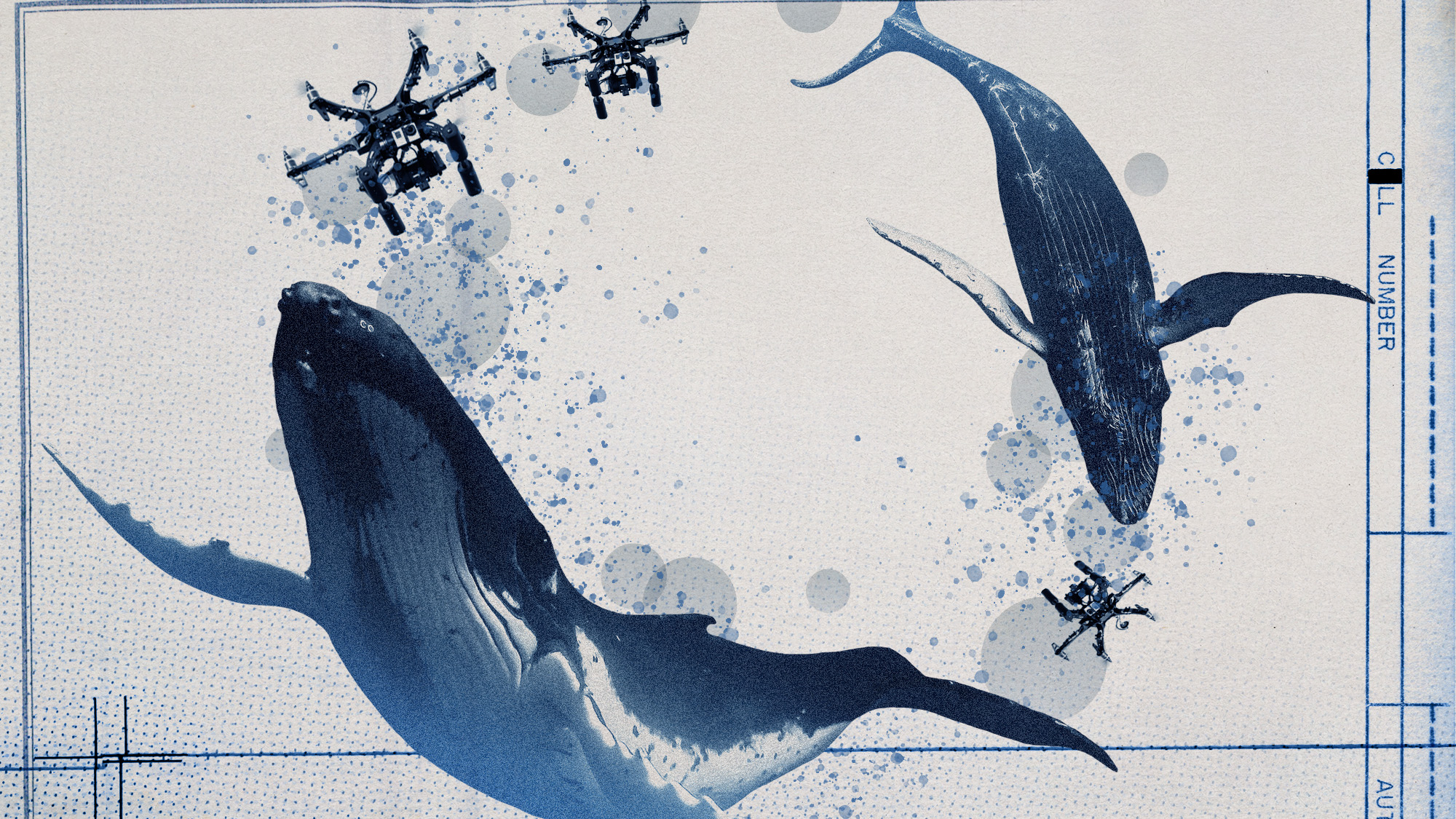I saw a stranger contemplating suicide. I wanted to act. But I did not.
I'm not proud of this. Learn from my mistakes.


What would you do if you saw a stranger contemplating suicide?
Maybe you're the type of person who would try to talk to the troubled stranger to convince her not to go through with it. Maybe you'd react forcefully, physically restraining the stranger to prevent self-harm. Perhaps you'd call the police or a suicide prevention hotline for help.
Or maybe you'd do nothing at all. That's what I did.
The Week
Escape your echo chamber. Get the facts behind the news, plus analysis from multiple perspectives.

Sign up for The Week's Free Newsletters
From our morning news briefing to a weekly Good News Newsletter, get the best of The Week delivered directly to your inbox.
From our morning news briefing to a weekly Good News Newsletter, get the best of The Week delivered directly to your inbox.
When I first noticed the man, it was because he was wearing a bright orange jacket. He looked to be in his late 20s or early 30s, just another tired New Yorker on my subway ride home. But when he stepped through the sliding door, as if to pass into the next train car, and paused in the space between the carriages, I immediately realized something was wrong.
Despite the signs warning you not to, people actually pass between subway cars fairly frequently in New York. Only most of the time, these people move into the next car as quickly as possible. While there are certainly thrill-seekers who like to surf between the cars, this man didn't look like he was having any fun. If anything, he looked upset or deep in thought.
Our Manhattan-bound train was underground when the man moved between the cars, but it soon crested out of the tunnel and onto the Manhattan Bridge, and the man still hadn't budged. As the train broke into the glare of daylight, he let out a loud, long wail, startling everyone in the car who hadn't already turned to nervously watch what he was doing. The woman sitting beside me stood up to move farther away from him, glancing anxiously at the man over her shoulder.
At this point, I was looking frantically around the train trying to gauge how everyone else was reacting. Part of me was also trying to justify that this was normal — people surf between cars all the time, don't they? — but the terrified, wide eyes of everyone around me suggested they were thinking the same thing I was.
A free daily email with the biggest news stories of the day – and the best features from TheWeek.com
The man was considering jumping.
A number of options flashed through my mind. New York's trains have red call buttons to connect to a conductor — I could buzz to ask what to do. Because the train was running above ground, I had phone reception, so I could call the NYPD or a suicide prevention hotline for guidance. Passengers can also request an emergency stop, but I was afraid that if the train were to halt, the man might panic and scramble over the flimsy metal guards on either of his sides.
But most of all, I found myself selfishly wondering: Wouldn't someone else surely do something, if it was the right thing to do?
Instead of acting myself, I continued to silently single out other people on the train — mothers, a businessman, a group of women my age. I made pointed eye contact with them, silently urging them to act. But I did nothing, even as I saw the man crouch down, examining the flimsy metal divide keeping him on the safe side of certain injury or death.
And then, after a terrifying moment where I thought he had already gone, I saw the man straighten and pass into the next car.
I was left trembling, disturbed by what I'd seen but also afraid of what I had learned about myself. I realized I was what psychologists call a "bystander" — a person who, upon seeing someone in trouble, does not intervene under the assumption that someone else will.
The most famous case of the bystander effect is the rape and murder of Kitty Genovese in New York City in 1964. After her death, The New York Times reported that as many as 38 witnesses heard Genovese's screams for help but did not come to her aid or call the police.
While there have since been many reported discrepancies about exactly how many people were indifferent to Genovese's screams and whether or not the police responded, the bystander effect is very real. It is still not unusual to hear stories about people being beaten or attacked while onlookers freeze, record video with their phones, or otherwise refuse to intervene.
Psychologists Bibb Latané and John Darley were the first to formally demonstrate the bystander phenomenon. The pair performed a series of experiments illustrating groups' diffusion of responsibility in the wake of Genovese's murder. In one such study, 72 students were told to discuss a topic from private booths where they could not see who was talking or listening to them. An actor would then fake a seizure in the room.
When a student was alone with the person having a "seizure," 85 percent of the time they would run from the room to get help. But when there were four participants in the room, the chance of someone getting help plummeted to just 31 percent.
More recent studies have found that the bystander effect can even be observed in 5-year-olds, with researchers concluding "it was diffusion of responsibility, not social referencing or shyness, that caused the kids to decline stepping in to help." In the 1990s, the Department of Justice learned that a third party is witness to 70 percent of assaults, 52 percent of robberies, and 29 percent of sexual assaults or rapes.
But bystanders are not bad people — as these studies show, it is entirely natural to feel panic at the sudden, unanticipated responsibility of potentially saving somebody's life. But most people simply never expect to be in such a situation in the first place, which means when one arises, they don't have a plan for how to react. As a result, they freeze up.
A blogger for Better Humans suggests you can prevent this reaction by deciding ahead of time what you would do in such a situation, just as people in CPR training rehearse how to "recognize an emergency and take charge." Psychology Today adds that "you have to assume that since no one has stepped forward, then you are in control." By singling people out for direct tasks — "you in the red shirt, call the conductor," for example — you can additionally "[snap] people out of their lethargy or voyeuristic trance and [get] them to react."
"In many instances where people are suffering from a crisis or a medical emergency, once someone steps forward and begins to help, others usually respond in kind," Psychology Today writes.
While there are relatively few campaigns to try to sharpen people's reactions to such crises, one effort in Canada in 2015 used the evocative hashtag #WhoWillYouHelp to encourage bystanders to intervene when witnessing sexual assaults. The study of child bystanders also recommended that "interventions to promote helpfulness in bystander-type situations should address the issue of diffusion of responsibility early in development."
I have been on the other side of this, too. Years ago, I was aggressively threatened and stalked by two men on a train who followed me from car to car as I tried to get away. When I loudly yelled at them to leave me alone and looked around for someone on the train to step in to help me, men and women alike avoided eye contract. I eventually had to get off the train to flee to a police booth to protect myself.
Afterward, I was more rattled by the fact that no one had stood up to defend me than I had been afraid of the men themselves.
So ask yourself: What would you do if you saw a stranger contemplating suicide? A stranger being attacked? A stranger calling for your help? Make a plan now so you are ready to step up. Preemptively save hotline and emergency numbers in your phone so they are at hand if — and when — something happens.
Because you never know when others might need to do the same for you.
Jeva Lange was the executive editor at TheWeek.com. She formerly served as The Week's deputy editor and culture critic. She is also a contributor to Screen Slate, and her writing has appeared in The New York Daily News, The Awl, Vice, and Gothamist, among other publications. Jeva lives in New York City. Follow her on Twitter.
-
 How drones have detected a deadly threat to Arctic whales
How drones have detected a deadly threat to Arctic whalesUnder the radar Monitoring the sea in the air
-
 A running list of the US government figures Donald Trump has pardoned
A running list of the US government figures Donald Trump has pardonedin depth Clearing the slate for his favorite elected officials
-
 Ski town strikers fight rising cost of living
Ski town strikers fight rising cost of livingThe Explainer Telluride is the latest ski resort experiencing an instructor strike
